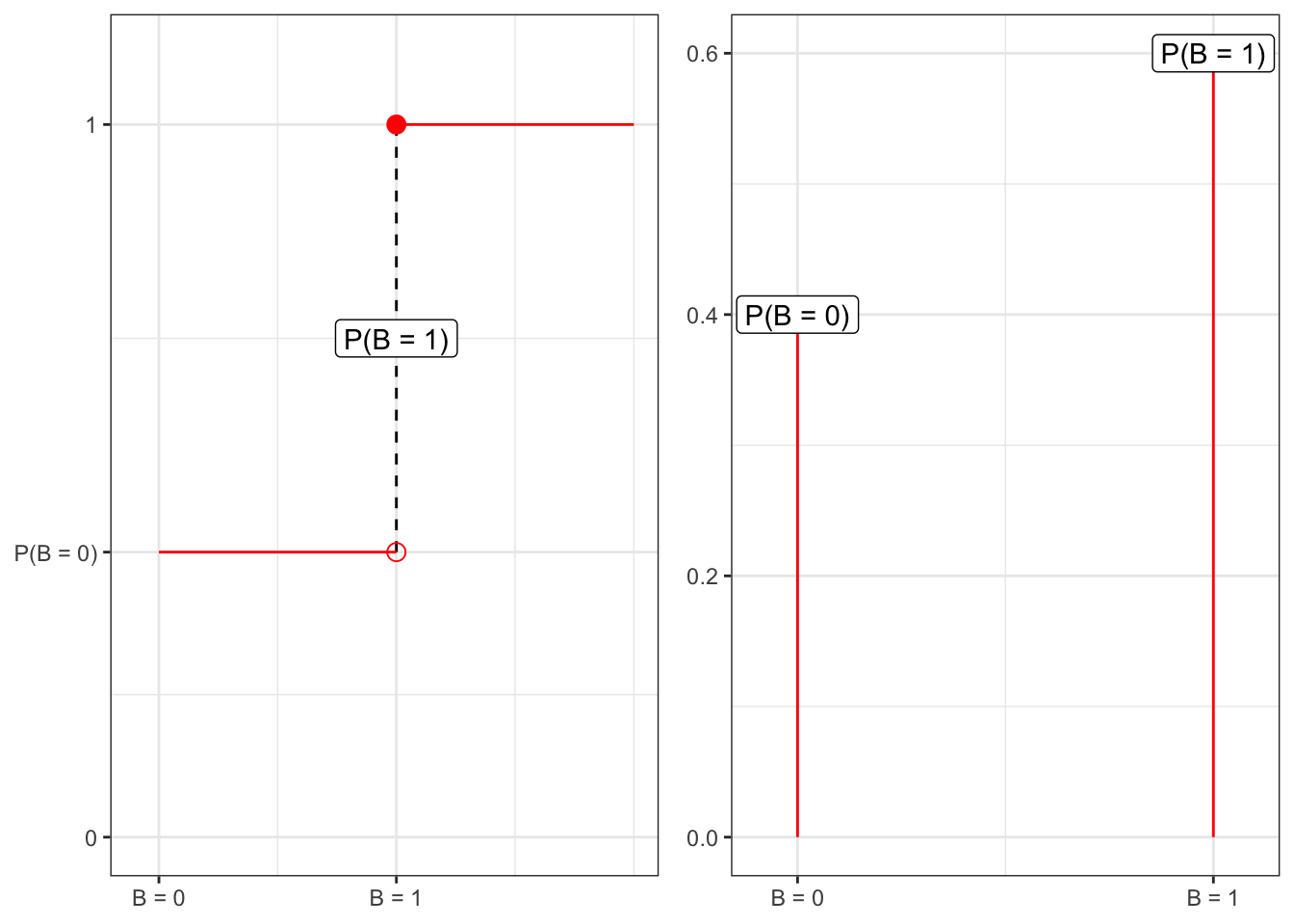27 Bernoulli random variable
27.1 Distribution and density
Definition 27.1 To construct a continuous distribution for a Bernoulli random variable, one can use the linear combination of two heavy side functions (Equation 1.10), i.e.
27.2 Characteristic function
Proposition 27.1 The characteristic function of a Bernoulli random variable reads explicitly:
27.3 Moments
Proposition 27.2 The

